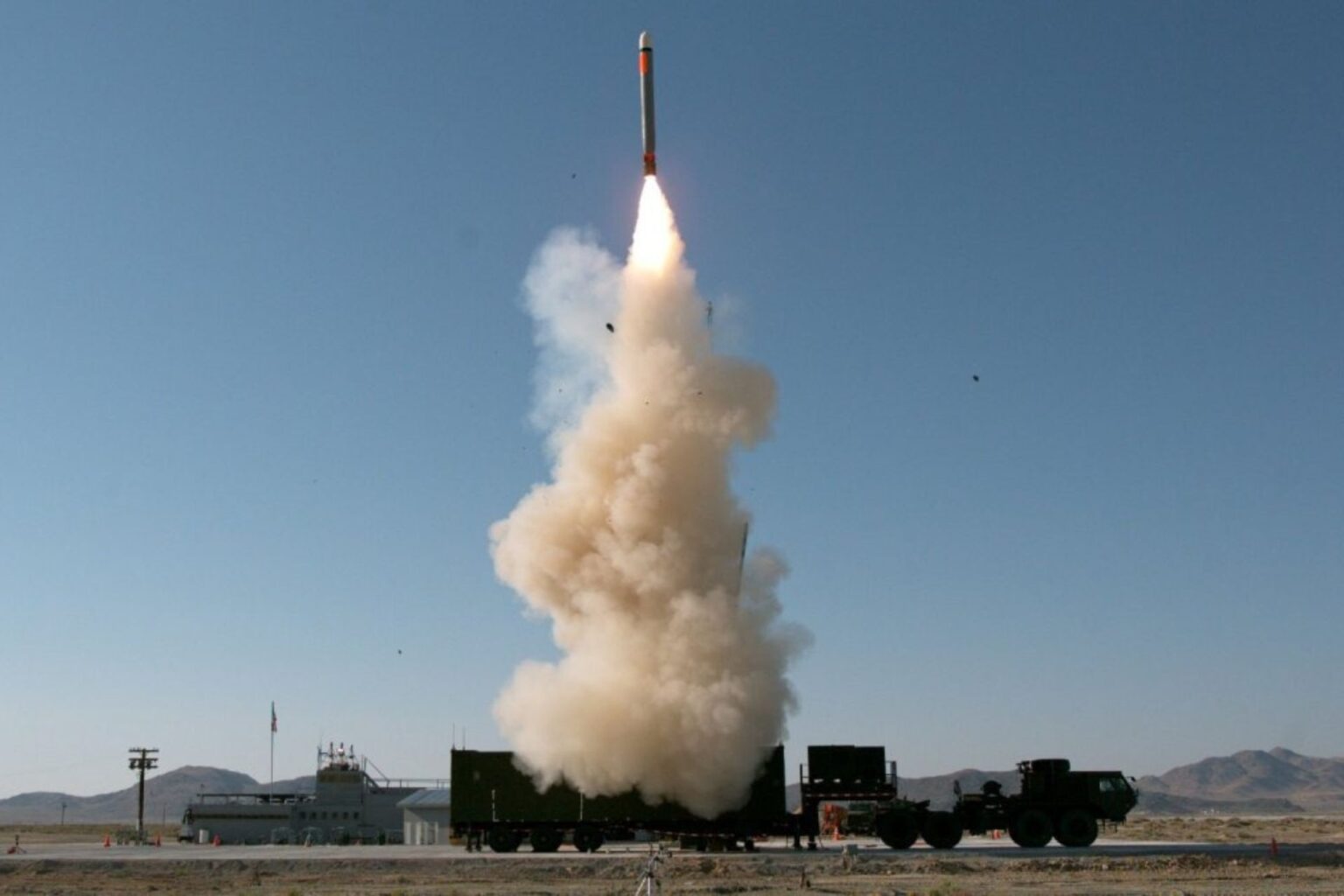Analyzing The Risks Of The Philippines' Typhon Mid-Range Missile System

Table of Contents
Escalation of Regional Tensions
The introduction of a new missile system like the Typhoon can significantly alter the regional security landscape, potentially leading to increased tensions.
Increased Military Posturing
The deployment of the Typhoon missile system could trigger a heightened sense of insecurity among neighboring countries. This might manifest in several ways:
- Potential for miscalculation and accidental conflict: The presence of new weaponry increases the risk of misinterpreting actions and inadvertently escalating a situation into a full-blown conflict. A perceived threat, even if unintentional, can lead to drastic responses.
- Increased military exercises and deployments by rival nations: Neighboring countries may respond to the Philippines' acquisition by increasing their own military activities, creating a cycle of escalating tensions. This could involve more frequent and larger-scale military exercises and troop deployments in the region.
- Risk of triggering a spiral of reciprocal military build-ups: An arms race could ensue, with other nations feeling compelled to acquire their own advanced weaponry to maintain a perceived balance of power. This would have significant economic and security consequences for the entire region.
Provocation and Retaliation
The Typhoon missile system's capabilities, even if purely defensive in intent, could be perceived as provocative by certain actors. This perception could trigger retaliatory actions or even preemptive strikes.
- Vulnerability to counter-measures and preemptive attacks: The system itself could become a target, making it vulnerable to preemptive attacks or disabling counter-measures from rival nations. This necessitates robust defensive capabilities to protect the system.
- Risk of unintended escalation through misinterpretation of actions: Any action taken in response to a perceived threat, even a defensive one, risks being misinterpreted, further exacerbating the situation and potentially leading to unforeseen escalation. Clear communication channels are essential.
- Need for robust communication and de-escalation mechanisms: Effective diplomatic channels and clear communication protocols are vital to preventing miscalculations and de-escalating any potential crisis before it spirals out of control. This requires proactive engagement with neighboring countries.
Economic and Societal Costs
The acquisition and operation of the Typhoon missile system come with substantial economic and societal implications for the Philippines.
Financial Burden
The procurement, maintenance, and operation of the Typhoon missile system represent a significant financial burden for the Philippines.
- Opportunity cost of investing in missile systems versus other national priorities: The substantial financial investment in the missile system could divert resources from critical areas such as healthcare, education, and infrastructure development, potentially hindering long-term national progress.
- Potential for corruption and mismanagement of funds: Large-scale military procurement projects are often susceptible to corruption and mismanagement, potentially leading to inefficient use of taxpayer money. Transparency and accountability are paramount.
- Long-term economic implications of increased military spending: Sustained high military spending could strain the national budget, potentially impacting other sectors of the economy and slowing down overall growth.
Social Impact
The deployment of the Typhoon missile system could also raise social anxieties and concerns.
- Public perception and acceptance of the missile system: Public opinion regarding the missile system is crucial. A lack of transparency or public support could lead to political instability. Effective communication is essential.
- Impact on tourism and foreign investment: Concerns about regional stability and potential conflict could negatively impact tourism and foreign investment, hurting the Philippine economy.
- Potential for internal dissent and political instability: The system's cost and potential risks could lead to internal dissent and political instability, particularly if the public perceives a lack of transparency or accountability in its deployment.
Technical and Operational Risks
Beyond geopolitical considerations, the Typhoon system faces inherent technical and operational risks.
System Reliability and Maintenance
The effective operation of the Typhoon missile system depends heavily on its reliability and the capability of the Philippine military to maintain and operate it effectively.
- Need for extensive training and technical expertise: Operating and maintaining such a sophisticated system requires highly trained personnel. A lack of skilled manpower could compromise the system's effectiveness.
- Dependence on foreign suppliers for parts and maintenance: Reliance on foreign suppliers for parts and maintenance creates vulnerabilities, potentially affecting the system's operational readiness. Diversifying suppliers is crucial.
- Vulnerability to technical failures and malfunctions: As with any complex system, the Typhoon missile system is susceptible to technical failures and malfunctions, which could have severe consequences. Robust maintenance protocols are essential.
Cybersecurity Vulnerabilities
Modern missile systems, like the Typhoon, are increasingly reliant on sophisticated computer systems, making them vulnerable to cyberattacks.
- Risk of hacking and disruption of the system's operation: Cyberattacks could disrupt the system's operation, potentially rendering it useless or even turning it against its intended purpose.
- Importance of robust cybersecurity measures and protocols: Investing in robust cybersecurity measures and protocols is crucial to protect the system from cyber threats and sabotage.
- Potential for sabotage and unauthorized access: The system's vulnerability to unauthorized access or sabotage poses a significant security risk, requiring stringent access controls and monitoring systems.
Conclusion
The deployment of the Philippines' Typhoon mid-range missile system presents a complex interplay of potential benefits and risks related to Philippines Typhoon Missile System Risks. While enhancing defensive capabilities is a legitimate goal, the potential for regional escalation, significant economic costs, and technical vulnerabilities cannot be ignored. A thorough assessment of these Philippines Typhoon Missile System Risks is crucial for policymakers to develop a comprehensive strategy that balances national security needs with broader regional stability and national development priorities. Further research and open discussion about the Philippines Typhoon Missile System Risks are vital to mitigating these potential dangers and ensuring responsible utilization of this powerful technology. A careful cost-benefit analysis, considering all aspects of the Philippines Typhoon Missile System Risks, is essential before further deployments.

Featured Posts
-
 Public Works Ministrys 6 Billion Commitment To Strengthen Sea And River Defenses
May 20, 2025
Public Works Ministrys 6 Billion Commitment To Strengthen Sea And River Defenses
May 20, 2025 -
 Robert Pattinson Shares Script With Suki Waterhouse
May 20, 2025
Robert Pattinson Shares Script With Suki Waterhouse
May 20, 2025 -
 Efimereyontes Iatroi Savvatokyriako 12 And 13 Aprilioy Stin Patra
May 20, 2025
Efimereyontes Iatroi Savvatokyriako 12 And 13 Aprilioy Stin Patra
May 20, 2025 -
 Understanding The D Wave Quantum Qbts Stock Fall On Monday
May 20, 2025
Understanding The D Wave Quantum Qbts Stock Fall On Monday
May 20, 2025 -
 I Tzenifer Lorens Egine Mitera Gia Deyteri Fora
May 20, 2025
I Tzenifer Lorens Egine Mitera Gia Deyteri Fora
May 20, 2025
